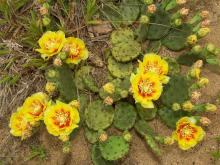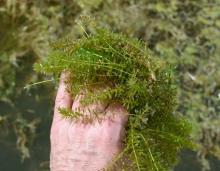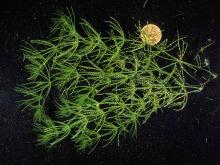Wildflowers, Grasses and Other Nonwoody Plants
Media

Species Types
Scientific Name
Echinacea simulata
Description
One of Missouri’s five types of echinaceas, glade coneflower is distinguished by its yellow pollen, drooping pink or purple ray flowers, and narrow, tapering leaves. Look for it in the eastern Ozarks, and at native plant nurseries!
Media

Species Types
Scientific Name
Carduus nutans
Description
An invasive native of Eurasia that is spreading in Missouri, musk thistle is a plant you should know. Learn how to tell the difference between our native thistles and these bad guys.
Media

Species Types
Scientific Name
Cirsium vulgare
Description
Bull thistle is a weedy introduction from Europe, found statewide. To tell it from our other thistles, note its stems with spiny-margined wings, and its leaves with the upper surface strongly roughened with stiff, spiny bristles.
Media

Species Types
Scientific Name
Cirsium altissimum
Description
Tall thistle is a native thistle that can grow to be 10 feet tall! To identify it, notice its leaves, which are unlobed (though they may be wavy or have only shallow, broad lobes), are felty-hairy beneath, and have prickles only along the edges.
Media

Species Types
Scientific Name
Cirsium arvense
Description
Canada thistle is a native to Eurasia and arrived on our continent probably before the Revolutionary War — most likely mixed in agricultural seed. A bad weed of crop fields and rangeland farther north, it causes problems in Missouri, too.
Media

Species Types
Scientific Name
Galium aparine
Description
The tiny white flowers of this native plant are not very memorable, but the curious, sticky-feeling whorls of narrow leaves and lightweight, 4-sided stems make cleavers unique. And then there’s the tiny, round, “Velcro” covered balls of the seeds, which “stick tight” to your socks!
Media

Species Types
Scientific Name
Opuntia humifusa (formerly O. compressa)
Description
Cacti make us think of the desert southwest, but there is at least one species native to Missouri. This prickly pear grows in glades, sand prairies, rocky open hillsides, and other dry, sun-soaked areas.
Media

Species Types
Scientific Name
Hydrilla verticillata
Description
Hydrilla is probably the worst submersed aquatic weed in America. It harms aquatic communities in small ponds, lakes, and rivers. It hurts our economy by hindering fishing and other recreational uses in large reservoirs. Learn about it and prevent its spread.
Media

Species Types
Scientific Name
Chara spp.
Description
These aquatic algae look like regular vascular plants. Chara has a crisp, gritty texture, a musky odor, and gray-green, needlelike structures that resemble leaves.
Media

Species Types
Scientific Name
Ceratophyllum demersum
Description
Coontail, a common submerged aquatic plant, got its name from the crowded upper leaves, which make the stem tip appear bushy like the tail of a raccoon.
See Also
About Wildflowers, Grasses and Other Nonwoody Plants in Missouri
A very simple way of thinking about the green world is to divide the vascular plants into two groups: woody and nonwoody (or herbaceous). But this is an artificial division; many plant families include some species that are woody and some that are not. The diversity of nonwoody vascular plants is staggering! Think of all the ferns, grasses, sedges, lilies, peas, sunflowers, nightshades, milkweeds, mustards, mints, and mallows — weeds and wildflowers — and many more!





















